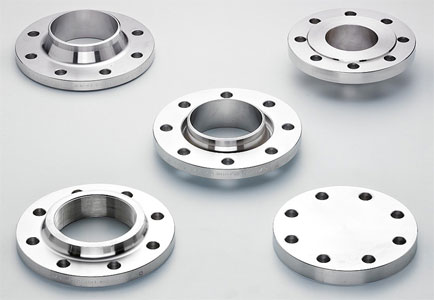What are Difference between the standard DN flange and the PN flange?
In the world of industrial engineering and pipeline systems, flanges play a crucial role in connecting various components. They come in various types, including standard DN flanges and PN (Pressure Nominal) flanges. These two types of flanges are frequently used in different applications and have distinct characteristics that set them apart. In this article, we will delve into the key differences between standard DN flanges and PN flanges to help you better understand their unique attributes and applications.

Understanding Flanges
Before we explore the differences between standard DN and PN flanges, it’s essential to have a basic understanding of what flanges are and their significance in various industries. Flanges are flat, circular components with evenly spaced bolt holes, designed to connect pipes, valves, pumps, and other equipment within a piping system. They are used to create a strong, leak-proof connection between components and allow for easy maintenance and repairs.
Distinguishing Standard DN Flanges
1. DN Designation:
DN is an abbreviation for “Diamètre Nominal” in the French language, equivalent to “Nominal Diameter” in English. DN flanges of the standard variety are primarily characterized by their nominal diameter, denoting the pipe size they are intended to link.Standard DN flanges come in a diverse array of dimensions, rendering them compatible with an assortment of pipe diameters.
2. Pressure Ratings:
– Standard DN flanges do not have fixed pressure ratings, as their design is primarily based on the nominal pipe size.
– The pressure capacity of a standard DN flange depends on factors such as material, design, and the application in which it is used.
3. International Standards:
– Standard DN flanges are often designed according to international standards, including ISO, DIN (Deutsches Institut für Normung), and EN (European Norms), ensuring compatibility with a broad range of pipelines and components.
4. Common Applications:
–PN flanges are commonly crafted from materials capable of enduring elevated pressures and temperatures, including stainless steel and carbon steel.
Exploring PN Flanges
1. PN Designation:
“PN” abbreviates “Pressure Nominal,” and unlike conventional DN flanges, PN flanges are specifically assigned pressure ratings that signify their maximum allowable operating pressure. These pressure ratings for PN flanges are typically denoted in bars, such as PN10, PN16, PN25, and so forth.
2. Pressure Ratings:
– PN flanges are designed with specific pressure ratings, ensuring that they can handle the intended operating conditions.
– These flanges are commonly used in applications where maintaining precise pressure levels is critical, such as in chemical processing plants and the petrochemical industry.
3. European Standard:
– PN flanges are widely used in Europe and are designed to conform to European standards, particularly the EN 1092-1 standard.
Key Differences
1. Designation Basis:
– The primary difference between standard DN and PN flanges lies in their designation. Standard DN flanges are identified by nominal diameter, while PN flanges are designated by pressure rating.
2. Pressure Handling:
– Standard DN flanges do not have fixed pressure ratings and can vary depending on factors like material and design, whereas PN flanges have specific pressure ratings, making them suitable for applications with defined pressure requirements.
3. International vs. European Standards:
– Standard DN flanges conform to international standards and are more versatile in terms of global applicability, while PN flanges align with European standards and are prevalent in European industries.
4. Application Scope:
– Standard DN flanges are versatile and used in a wide range of applications with varying pressure requirements. In contrast, PN flanges are preferred in applications where maintaining precise pressure levels is crucial.
Conclusion
it is evident that standard DN flanges and PN flanges play indispensable roles in the realm of industrial engineering, each boasting unique characteristics and specific utility. The standard DN flange, defined by its nominal diameter, finds widespread use across diverse industrial sectors. In contrast, PN flanges, classified according to their pressure ratings, excel in situations necessitating precise pressure compliance. An in-depth comprehension of the disparities between these flange types is paramount for making informed choices that guarantee the security and effectiveness of your piping systems.




